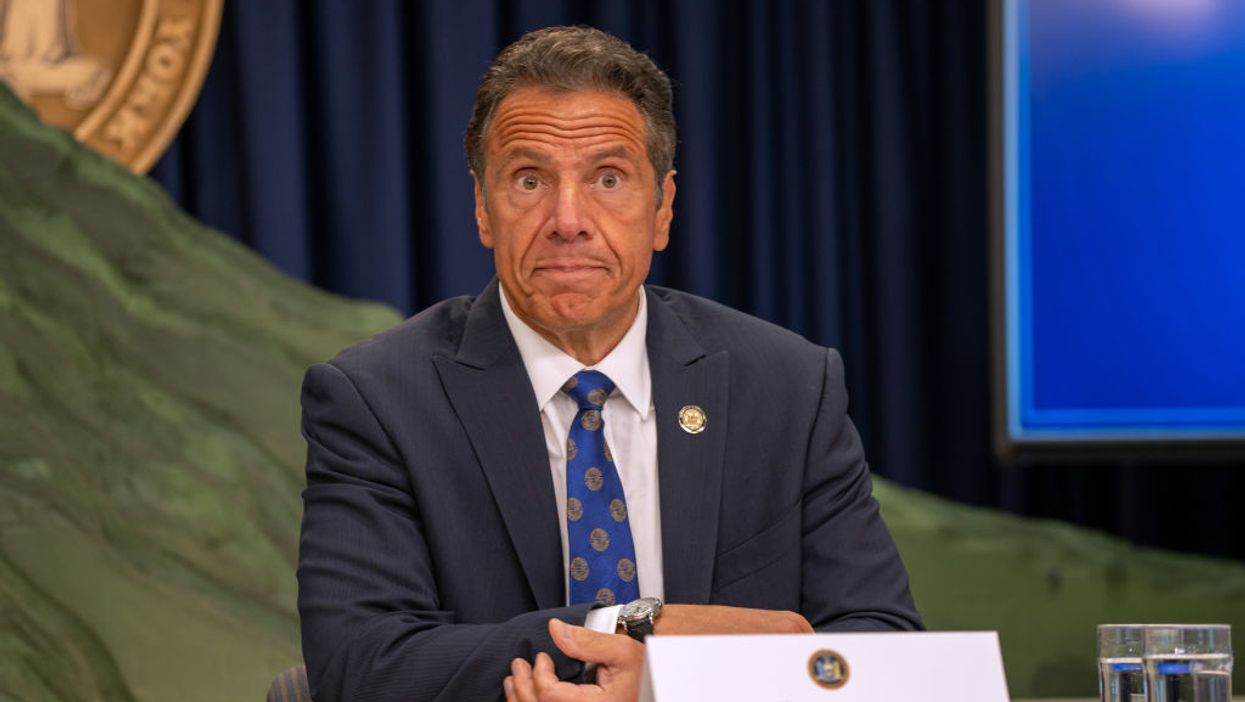
David Dee Delgado/Getty Images

This being the internet, I suppose I should say right up front that the title of this post is sarcastic. It is facially obvious that no one who wants to learn anything about actual science should look to the way New York has responded to this pandemic.
However, New York Governor Andrew Cuomo — whose state has had by far the worst coronavirus response by any objective measure has taken to lecturing other public leaders (including Republican governors and President Trump) about the need to let science be the sole guide of public policy when handling the coronavirus. The implication of this ridiculous horn tooting is that Cuomo himself has done nothing but follow science since the pandemic started.
Well, if we take Cuomo at his word, let's look (sarcastically) at some of the very science-based things we can learn from New York's handling of the coronavirus pandemic.
By all accounts, nursing home patients are at by far the greatest risk of any group in the world from the coronavirus. They represent a hugely disproportionate number of deaths and hospitalizations from the virus. Nursing home patients represent only 11 per cent of all positive cases, but nearly half of all deaths in the United States.
In light of this information, you might think that science would suggest that the most important thing to do would be to protect nursing home residents from infection, and to isolate infected residents from the rest of the population.
Instead, Cuomo literally ordered nursing homes to take in coronavirus patients, ensuring that they stayed indoors in closed quarters with non-infected nursing home patients, thus effectively signing the death warrants for thousands of New Yorkers.
Science!
We know now that the coronavirus does not easily live on surfaces and that contact with infected surfaces is not considered by the CDC to be a "primary" driver of the pandemic. However, it still remains possible to contract the disease from a contaminated surface if someone touches their face or mouth after touching that surface, which is why the CDC still retains the painfully obvious advice to "routinely clean and disinfect" frequently touched surfaces.
If you have ever been to New York City, you know that pretty much everything in the New York City subway constitutes a "frequently touched surface." And yet, while the city's "essential workers" continued to use the subways during the initial stages of the pandemic, it was not until the final days of April — over a month after the pandemic started — that Cuomo finally ordered that the subways be cleaned nightly.
Of course, apart from the issue of cleaning the surfaces of the subway, Cuomo and de Blasio did nothing to address the problem of the city's homeless, who descended upon the suddenly-spacious subways when the pandemic started and effectively moved in, ensuring that they themselves became a driver for pandemic.
An MIT study released in Mid-April condemned New York's handling of the subway system and faulted its leadership for allowing the subways to become a "major disseminator" of the virus; however, New York's science-minded governor did not act on this information for another two weeks.
Science!
This one hardly needs explanation. I had always understood from my biology class that viruses and bacteria do not have brains, or consciences, or a sense of social justice. I learned from Cuomo and de Blasio, however, that this just isn't true! Viruses are apparently big on infecting churchgoers (and, based on de Blasio's actions and rhetoric, they are especially fond of Jewish gatherings for some reason), but they would not dare to infect people who protested for a worthy cause like Black Lives Matter.
How else would you explain the rigorous measures taken by Cuomo and de Blasio to punish people for gathering for literally any reason other than to protest?
In spite of significant evidence that children — particularly younger children — are not driving the spread of the coronavirus, New York's School system will not reopen fully this fall, due probably in large part to pressure from teachers' unions. What is going to happen, however, is that New York will provide taxpayer funded "community centers" which will provide places for parents to bring their children, drop them off, and have them supervised by city employees.
Which, you may notice, sounds exactly like a school, at least as far as an infectious disease is concerned.
It is not, however, exactly like a school as far as the development of children is concerned. The American Academy of Pediatrics (who are scientists) says, "We recognize that children learn best when physically present in the classroom. But children get much more than academics at school. They also learn social and emotional skills at school, get healthy meals and exercise, mental health support and other services that cannot be easily replicated online. Schools also play a critical role in addressing racial and social inequity. Our nation's response to COVID-19 has laid bare inequities and consequences for children that must be addressed. This pandemic is especially hard on families who rely on school lunches, have children with disabilities, or lack access to Internet or health care."
What I learned from New York, however, is that it's apparently more important to keep teachers' unions happy, even if it comes at the price of the health of children, who will be placed in a situation that is virtually identical to school.
Science!